Changes in Matter: Chemical & Nuclear Reactions Textbook Chapter
advertisement
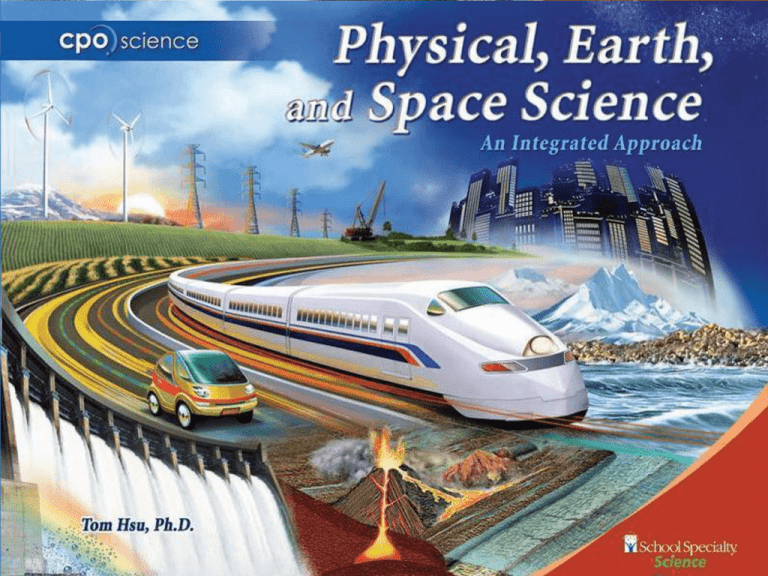
UNIT FOUR: Matter and its Changes Chapter 12 Atoms and the Periodic Table Chapter 13 Compounds Chapter 14 Changes in Matter Chapter 15 Chemical Cycles and Climate Change Chapter Fourteen: Changes in Matter 14.1 Chemical Reactions 14.2 Types of Reactions 14.3 Energy and Chemical Reactions 14.4 Nuclear Reactions Chapter 14.4 Learning Goals Compare and contrast chemical and nuclear reactions. Explain the significance of the strong nuclear force. Explore benefits and negative effects of nuclear reactions. 14.4 Chemical vs. Nuclear Reactions The involvement of energy in chemical reactions has to do with the breaking and forming of chemical bonds. A nuclear reaction involves altering the number of protons and/or neutrons in an atom. 14.4 Chemical vs. Nuclear Reactions For complex reasons, the nucleus of an atom becomes unstable if it contains too many or too few neutrons relative to the number of protons. The forces inside the atom result in it breaking apart or releasing particles. 14.4 Radioactivity Almost all elements have one or more isotopes that are stable. “Stable” means the nucleus stays together. Carbon-14 is radioactive because it has an unstable nucleus. 14.4 Radioactive Decay This process of radioactive decay results in an unstable, radioactive isotope like carbon14 becoming the more stable isotope nitrogen-14. 14.4 Radioactive Decay There are three types of radioactive decay: 1. alpha decay, 2. beta decay, and 3. gamma decay. 14.4 Two types of Nuclear Reactions There are two kinds of nuclear reactions: fusion and fission. Nuclear fusion is the process of combining the nuclei of lighter atoms to make heavier atoms. 14.4 Fusion Nuclear fusion occurs in the Sun and the resulting energy released provides Earth with heat and light. 14.4 Types of Nuclear Reactions Nuclear fission is the process of splitting the nucleus of an atom. A fission reaction can be started when a neutron bombards a nucleus. 14.4 Using nuclear reactions in medicine and science A half-life is a certain length of time after which half of the amount of radioactive element has decayed. As a radioactive element decays, it emits harmful radiation such as alpha and beta particles and gamma rays. 14.4 Using nuclear reactions Radioactive dating is a process used to figure out the age of objects by measuring the amount of radioactive material in it and by knowing the half-life of that substance. Understanding radioactive decay of uranium-238 has allowed scientists to determine that the age of Earth is 4.6 billion years old. 14.4 Using nuclear reactions in medicine and science Radioisotopes (also called radioactive isotopes) are commonly used as tracers in medicine and science. By adding a radioactive isotope into a system (such as the human body or an underground water supply), problems can be detected. Investigation 14C Types of Chemical Reactions Key Question: Can we measure the heat released/energy absorbed by instant hot and cold packs? Hydrogen Powered Cars Scientists and engineers from government agencies, universities, and all of the major automobile manufacturers are designing, building, and testing hydrogen fuel cell vehicles, also known as FCVs.

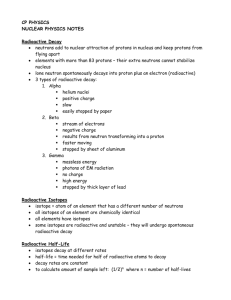

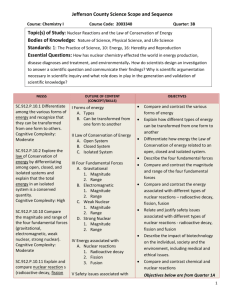
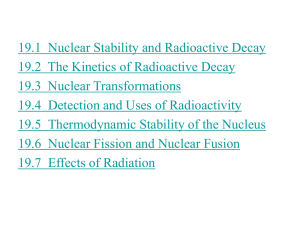
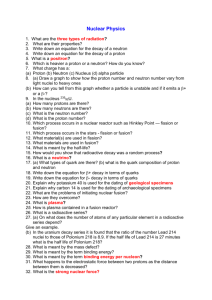

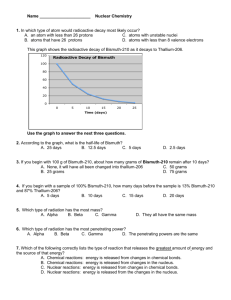
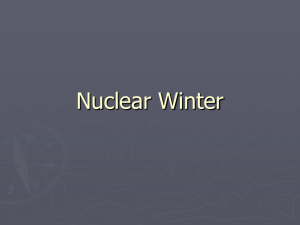


![The Politics of Protest [week 3]](http://s2.studylib.net/store/data/005229111_1-9491ac8e8d24cc184a2c9020ba192c97-300x300.png)